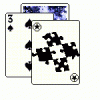RTS (features and story)
Populous: The Beginning was a 3D RTS where you could alter the terrain in different ways to aid in attack and defence. If you're doing a 2D game, I'm not sure how well it'd work but it's a feature that I liked quite a bit and haven't seen much in other games.
1. I would vouch for a tree-like mission system, something done in the original "Dune II": depending on which route you choose to take as you conquer across your map, different missions open and close, with different parameters based on what's already been accomplished. If Mission 1 has three possible locations to pursue, then Mission 2 may close off one of the two you didn't choose, and open others down a specific path.
As for parameters, as an example: let's say you have the option to either attempt a capture of an enemy supply depot, or an enemy armory. If you go for the supplies, then your next mission gets a unit cap increase of +10, but if you shoot for the armory, you'll have advanced tank technology and creation speed.
Just something to reward the player for their particular choices.
2. Story in an RTS to me just seems more about providing a reason to be playing. Usually RTS is about the S, like solving a dynamic real-time puzzle. Anything that can elicit some personal stake in a handful of protagonists and ramp up to create a stronger feeling of victory at the end should suffice :)
As for parameters, as an example: let's say you have the option to either attempt a capture of an enemy supply depot, or an enemy armory. If you go for the supplies, then your next mission gets a unit cap increase of +10, but if you shoot for the armory, you'll have advanced tank technology and creation speed.
Just something to reward the player for their particular choices.
2. Story in an RTS to me just seems more about providing a reason to be playing. Usually RTS is about the S, like solving a dynamic real-time puzzle. Anything that can elicit some personal stake in a handful of protagonists and ramp up to create a stronger feeling of victory at the end should suffice :)
Hazard Pay :: FPS/RTS in SharpDX (gathering dust, retained for... historical purposes)
DeviantArt :: Because right-brain needs love too (also pretty neglected these days)
Quote:
Original post by swiftcoder
... tricks ...
And thus the reason I stopped playing most multiplayer RTS games. If some neat 'trick' that makes use of an abuse of a feature or glitch becomes the best way to win a game, then the game design has failed in my eyes.
An example from StarCraft: Loading a Reaver into a Shuttle, dropping him near the opponent's harvesting and then rushing it back into the shuttle to run away after a shot or two. A seemingly valid tactic, but honestly it does little except piss off your opponent because he has no solid mechanics to defend against such an attack. A squad of marines strong enough to take down the shuttle does not have the range to guard against such an attack if placed in any single spot, and thus requires the defender to pull his focus away from the real battle to swat a fly and command the marines himself.
Honestly I would consider getting rid of resource gathering mechanics all together. Have them slowly trickle in to each player at an even rate, and be able to capture resources from the other side. Maybe add a few control points scattered around maps that could give a minor boost, but as much as 90% of resources should be fixed.
Old Username: Talroth
If your signature on a web forum takes up more space than your average post, then you are doing things wrong.
If your signature on a web forum takes up more space than your average post, then you are doing things wrong.
Non-linearity would be nice, but you have to watch out for making the player repeat too many missions on second play through and also watch for missions its easy to miss after two play through. You don't want to drive away players with repeat content they aren't interested in nor do you want to risk wasted effort on missions the player never plays.
I think generally one really long campaign with a strong story is better than two branches, two stories, and two half length play throughs.
I think generally one really long campaign with a strong story is better than two branches, two stories, and two half length play throughs.
I'd agree with BCullis's second point; in general, it's all about the strategy, story is little more than fluff to provide a bit of background to the proceedings. In general, I prefer it that way too - I'd take a dynamic, strategic campaign map like the Total War games over a linear, plot heavy storyline any day.
Also, a personal pet hate of mine is 'character' missions in RTS games. You get an overpowered hero character, a bunch of minions, no base, and a labyrinthine map with isolated blobs of idling bad guys waiting for you to stumble upon them. It's like taking all the worst elements from the RTS genre, all the worst elements from the RPG genre, and combining them together. 'Strategy' in these missions basically consists of attack-moving your hero and his amorphous blob of attendants around the map until you reach the end of the maze. These missions are incredibly tedious and will usually result in me abandoning the campaign and going back to skirmish/online play.
Also, a personal pet hate of mine is 'character' missions in RTS games. You get an overpowered hero character, a bunch of minions, no base, and a labyrinthine map with isolated blobs of idling bad guys waiting for you to stumble upon them. It's like taking all the worst elements from the RTS genre, all the worst elements from the RPG genre, and combining them together. 'Strategy' in these missions basically consists of attack-moving your hero and his amorphous blob of attendants around the map until you reach the end of the maze. These missions are incredibly tedious and will usually result in me abandoning the campaign and going back to skirmish/online play.
It would be cool if you could extend Command & Conquer's idea of fighting over specific territories as a metagame that controls the overall story and instances of specific events during a mission. You could work it a bit like Risk in that you can only attack neighboring territories from where you are, and each neighboring country has some bit of the story. So if you attack a territory that has a launch facility, for instance, the other side can't call down long range weapons from that facility; but perhaps the same could happen to you, handicapping some of your abilities.
In general I think it'd be helpful to think in terms of archetypes and build the story around their conflict. Although I agree story is often fluff in many RTS games, if it's done right it can be compelling (Kerrigan's fate in Starcraft was interesting enough for me to cheat through the latter missions to find out what happened! :D)
Your archetypes should be built around overall strategies, such as "sacrificing mobility in favor of defense" (sort of Zerg) or "sacrificing range in favor of close combat" (sort of Protoss). When you're designing them, you probably want to consider the types of strategies they'll engender and design the basic combat resolution system to support these. I think it's also important to design against the types of strategies you DON'T want, as well: Turtling, for instance, which encourages lengthy siege warfare, or "game ends with destruction of last unit" which could encourage the annoyance of having to hunt down every last frickin' unit on the field (even those stealthed).
One last point that I really admire about Starcraft that I didn't so much see in games like Warcraft, Total Annihilation or Command & Conquer is the blending of multiple functionality in novel ways. The troop limit, for instance, is embodied by structures for Terrans that are so tough they almost double as barricades; for Zerg, it's combined with shuttle and invisibility detector; for Protoss it's both the pylons that both extend the base and provide recharging (I *think*, can't exactly remember). What I believe makes this work really well is that you're not so much introducing an overly complex wealth of functions the player has to remember but rather calling on them to master variations on a theme. I think the lack of this makes many RTS (including C&C and TA and to some extent Supreme Commander) somewhat stale in comparison.
In general I think it'd be helpful to think in terms of archetypes and build the story around their conflict. Although I agree story is often fluff in many RTS games, if it's done right it can be compelling (Kerrigan's fate in Starcraft was interesting enough for me to cheat through the latter missions to find out what happened! :D)
Your archetypes should be built around overall strategies, such as "sacrificing mobility in favor of defense" (sort of Zerg) or "sacrificing range in favor of close combat" (sort of Protoss). When you're designing them, you probably want to consider the types of strategies they'll engender and design the basic combat resolution system to support these. I think it's also important to design against the types of strategies you DON'T want, as well: Turtling, for instance, which encourages lengthy siege warfare, or "game ends with destruction of last unit" which could encourage the annoyance of having to hunt down every last frickin' unit on the field (even those stealthed).
One last point that I really admire about Starcraft that I didn't so much see in games like Warcraft, Total Annihilation or Command & Conquer is the blending of multiple functionality in novel ways. The troop limit, for instance, is embodied by structures for Terrans that are so tough they almost double as barricades; for Zerg, it's combined with shuttle and invisibility detector; for Protoss it's both the pylons that both extend the base and provide recharging (I *think*, can't exactly remember). What I believe makes this work really well is that you're not so much introducing an overly complex wealth of functions the player has to remember but rather calling on them to master variations on a theme. I think the lack of this makes many RTS (including C&C and TA and to some extent Supreme Commander) somewhat stale in comparison.
--------------------Just waiting for the mothership...
I personally prefer the resource gathering style of Total Annihilation and Supreme Commander over the style of most others. Most games require a unit to go out an dig up a resource and bring it back. The game becomes a balance of "do I have enough resources to make this?" TA and SC use the flux model where the question becomes "Are my resources coming in fast enough to continue producing this?"
It is a slight but important change in the resource model. Absolute versus Flux.
It is a slight but important change in the resource model. Absolute versus Flux.
[s]I am a signature virus. Please add me to your signature so that I may multiply.[/s]I am a signature anti-virus. Please use me to remove your signature virus.
Quote:
Original post by Thermodynamics
I personally prefer the resource gathering style of Total Annihilation and Supreme Commander over the style of most others. Most games require a unit to go out an dig up a resource and bring it back. The game becomes a balance of "do I have enough resources to make this?" TA and SC use the flux model where the question becomes "Are my resources coming in fast enough to continue producing this?"
It is a slight but important change in the resource model. Absolute versus Flux.
Could you describe specifically how the resource gathering works in those games? I take it there aren't little peons harvesting stuff and carrying it back to the base?
Usually I find buildings that generate resources to be really boring, it's more interesting to see little workers scurrying around like ants carrying loot home.
I want to help design a "sandpark" MMO. Optional interactive story with quests and deeply characterized NPCs, plus sandbox elements like player-craftable housing and lots of other crafting. If you are starting a design of this type, please PM me. I also love pet-breeding games.
Quote:
Original post by sunandshadow
Could you describe specifically how the resource gathering works in those games? I take it there aren't little peons harvesting stuff and carrying it back to the base?
Usually I find buildings that generate resources to be really boring, it's more interesting to see little workers scurrying around like ants carrying loot home.
Specifically, they do it with buildings. There is nothing that prevents you from doing it with units. Its more about how things are built. When you queue up 15 soldiers are those resources all removed at once or as they are built? If you build a house do you need all of the resources for it first or is it ok to start with no resources on hand as long as you know they will be brought in quickly?
Does your resource meter show that you have 500 food in stock or does it show that you are producing 40/sec and using 38/sec?
[s]I am a signature virus. Please add me to your signature so that I may multiply.[/s]I am a signature anti-virus. Please use me to remove your signature virus.
Quote:I wouldn't put SupCom into that category either. Despite trying to focus on strategy and macro-management (and large unit counts), it's still all about micro-management and small-scale tactics.
Original post by swiftcoder Quote:Supreme commander certainly fits your category, but you need a new category for the Blizzard games.
Original post by Dragoncar
The first of these are the "Grand Strategy" games (eg. Starcraft, Supreme Commander, Warcraft) and usually involve base building, resource gathering and large numbers of units.
One of my favourite "RTS" series is Total War, which I'd call "grand strategy" mixed with "real time tactics".
Quote:Another important detail of the SupCom/TA model is how much storage you have. If you're producing 40/s and your factories/units/defences are using 38/s, then you've got 2/s going into storage.
Original post by Thermodynamics
Does your resource meter show that you have 500 food in stock or does it show that you are producing 40/sec and using 38/sec?
Once your storage fills up, that 2/s income is basically just thrown away. Having storage buildings gives you a buffer, so that when consumption goes up to 50/s and production is still 40/s, then your base/army will keep operating until your storage drains (which is happening at 10/s).
Some weapons would take huge amounts of energy to fire, so once every 5 seconds (after it reloads) you'd get a huge 500/s spike in energy consumption. If you weren't producing that much, or didn't have that much in storage, then the weapon couldn't fire. Also, sometimes you'd have to wait for your energy storage to build up to 500 before the gun could fire.
. 22 Racing Series .
This topic is closed to new replies.
Advertisement
Popular Topics
Advertisement
Recommended Tutorials
Advertisement












